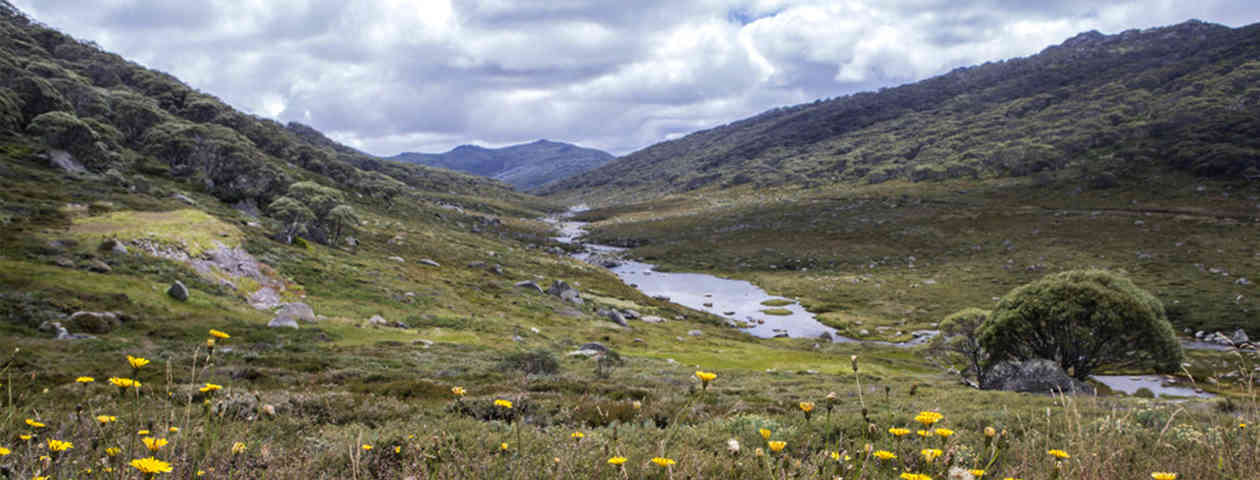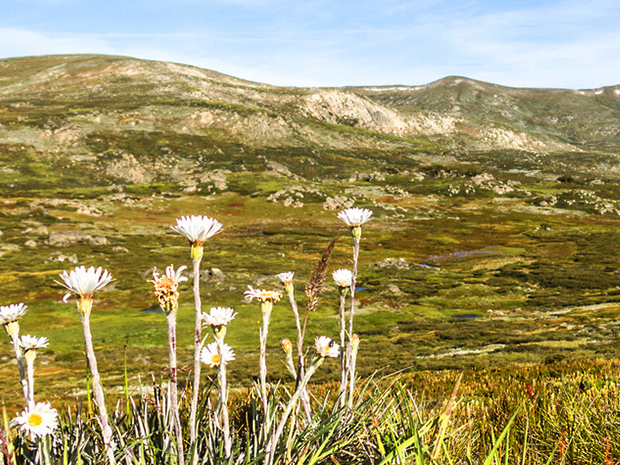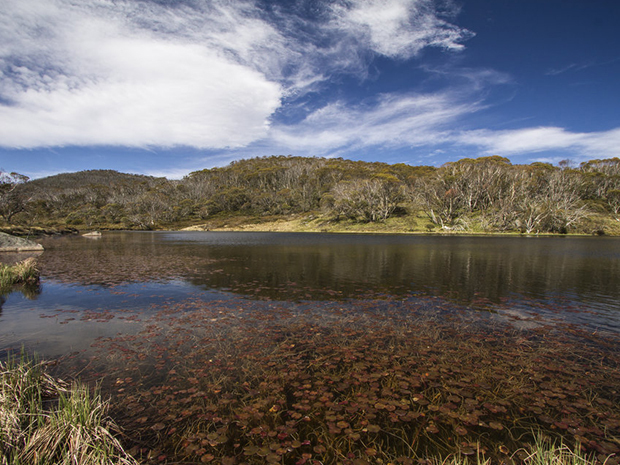
The Snowy Mountains is a magic place to visit all year round. During summer, colourful wild flowers carpet the area while in the winter the landscape is blanketed by snow.
Most plants are long lived perennials and these are able to winter-over under the snow. During summer, colourful wild flowers carpet the area while in the winter there is a landscape blanketed by snow.
"The wildflowers in summer produce a tapestry of colour in white, yellow, purple and orange."
The most obvious plants during winter are the native Snow Gums. Their low, broad branches are able to bend under the weight of winter snow. The wildflowers in summer produce a tapestry of colour in white, yellow, purple and orange. At higher altitudes above the tree line, the best displays occur in January and February.

In the Snowy Mountains there are wallabies in bushland, wombats ambling across the slopes, squirrel gliders, possums and platypus in the streams. Most animals in the mountains are elusive, many hibernate for months of the year, but if you walk quietly enough and remain vigilant you may spot a spotted-tailed quoll or pygmy possum. The pygmy possum is a mouse sized animal that was believed to be extinct until unexpectedly discovered in 1966. Like other small mammals in the alpine region, the pygmy possum survives the winter under a protective layer of snow. Among the more colourful species of the area are the endangered yellow and black corroboree frog, the red chested flame robin and the wingless grasshopper.
Groups of enthusiasts introduced brown and rainbow trout to the fast flowing streams of the Snowy Mountains in the late 19th century. Since then this fish has prospered, especially in the dams which attract thousands of anglers each year. The mountain galaxia is a native fish which averages only about 13cm in length, and survives in the smaller streams above the treeline through its ability to jump out of the water and clamber up steep rocks and waterfalls.

For Emergency Wildlife Rescue please contact L.A.O.K.O. (Looking After Our Kosciuszko Orphans) for 24 hour help on (02) 6456 1313 or visit the website. Enjoy our beautiful Snowy Mountains region, but please make sure to take care of our delicate flora and fauna when visiting.

Sign up for newsletters and deals from
Snowy Mountains and our partners.